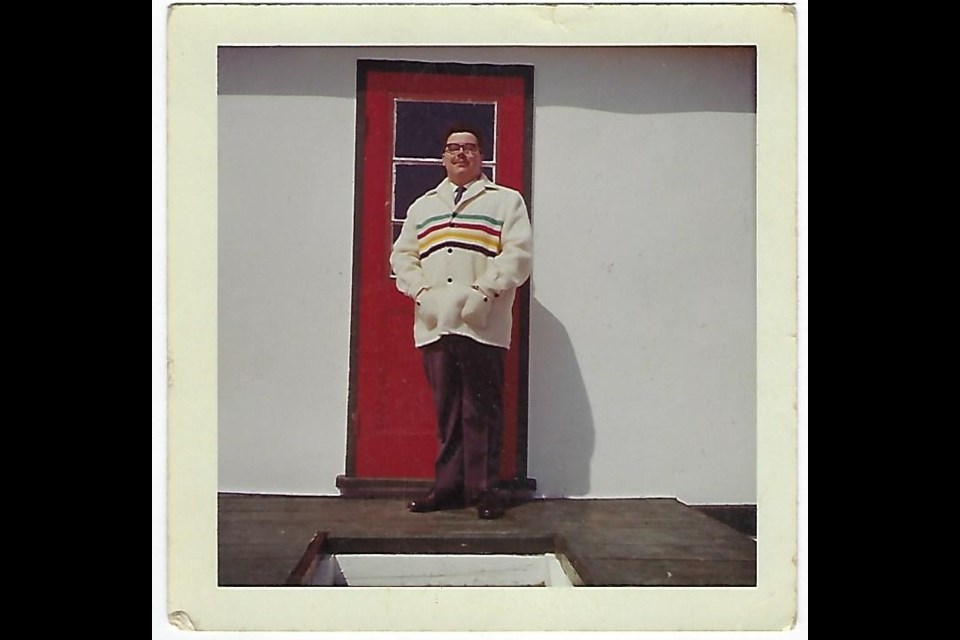When Fred Paisnel lived on the James Bay coast more than 60 years ago, he captured footage to show people back home what life was like in the northern First Nation communities.
Today, those videos are finding a new audience and offering a glimpse into the past after his son, Neil, shared them on YouTube.
Paisnel is originally from Jersey, the Channel Islands, which is located between England and France.
In the mid-1950s, he worked as a stand-in manager for the Hudson’s Bay Company in several communities including Moose Factory, Pagwa River, Temagami, Attawapiskat and Moosonee.
Paisnel had just turned 20 when he travelled to Canada by SS Australia ship with his friend Bob Troy.
“From what dad tells me, he did not want to go into farming,” Neil explained.
While he was up north, Paisnel took videos of people working and interacting with each other. There is also footage of the landscape such as ice flowing down the river or a helicopter flying over. The helicopter is from the Mid Canada Line, one of three lines of radar stations in Canada that acted as an early-detection system during the Cold War.
Neil copied the videos from cine film to digital a few years ago with the intention of editing them. Last week he decided to add them to YouTube.
“I just uploaded them raw as they were, no changes to file names, just a few basic notes to see if anyone was interested in them,” he said.
Last week Neil posted in a Facebook group looking to track down people shown in the videos. Since then, he said some people have recognized their relatives or other people.
In Moosonee, those were the happy times, Paisnel recalled.
“I was lucky in that the people who were there in my time were always nice people," he said. "We all got on well and had lots of fun and the occasional alcoholic drink. In our house, the staff house, the food was cooked by a lady who was called ‘Ma.’”
After leaving Moosonee, Paisnel took over a store in Pagwa River, then stayed in Moose Factory and was later transferred to Attawapiskat. After three months there, he decided to quit his job. He returned to Moosonee, took the train to Cochrane and went to Timmins where his aunt and uncle lived before heading back overseas.
Before Paisnel worked on the James Bay coast, he worked in Quebec in Manawan and Obedjiwan.
He recalled the first two or three days on the ship on the way to Canada were very rough and many people got seasick, but he and his friend Troy “didn’t miss a meal.”
The ship sailed up the St. Lawrence river and made a brief stop at Québec City. Then, they sailed to Montreal where they stayed at a hotel for a night. The next day, Troy and Paisnel interviewed with the Hudson's Bay Company.
Troy was sent to Labrador and a few other places on the coast and they didn't see each other again while they were in Canada.
As for Paisnel, he took a night train to Saint-Jovite that flew him into Manawan.
“It was just after a break-up, so it was really the first floatplane in,” he said. “I was met at the dock, which was a little wooden platform which extended into the lake, by the manager of the Hudson Bay store at Manawan, Eric Leach.”
Leach and his family housed Paisnel for 22 months.
“The whole house was comfortable, warm, well-built,” Paisnel said. “My bedroom was quite a large room and contained the two-way radio which we used every morning to contact a place called Senneterre to tell them we were all alive and kicking, to report which furs we had bought the previous day, the prices we paid, and that was then relayed to the headquarters in Montreal.”
At the time, all the furs and prices had a code name, said Paisnel. They used a codebook to read and send their messages.
The store sold a variety of products: canned foods, flour, sugar, salt and dried goods. There were also clothes like including parkas, ski pants, work clothes and warm underwear. The store also had fishing rods and 12-gauge shotguns in stock.
The main furs that were bought were beaver and mink. Sometimes, they did ermine or muskrat. There were also a few foxes, pine martens and lynxes, which they exchanged for food, Paisnel recalled.
“We also stored our furs that we bought up there and a contraption for packing them. We laid them down one on top of the other, pressing them down into a very tight bundle, which we then covered with Hessian sacking (burlap) and sewed up tightly for shipping,” he said.
In Manawa, the reserve was located across the lake and community members visited the store every day, according to Paisnel.
“Who, despite the fact they had very little, always seemed to be happy and always had a big smile and I can only treasure the memories of those people,” he said. “When one thinks of today’s materialistic society, these people had nothing or very little and yet they enjoyed life. Always smiling and happy … It was something that I will never forget.”
Paisnel is now 85, living in Jersey with his wife Elaine.
You can watch all of Paisnel's videos here.
